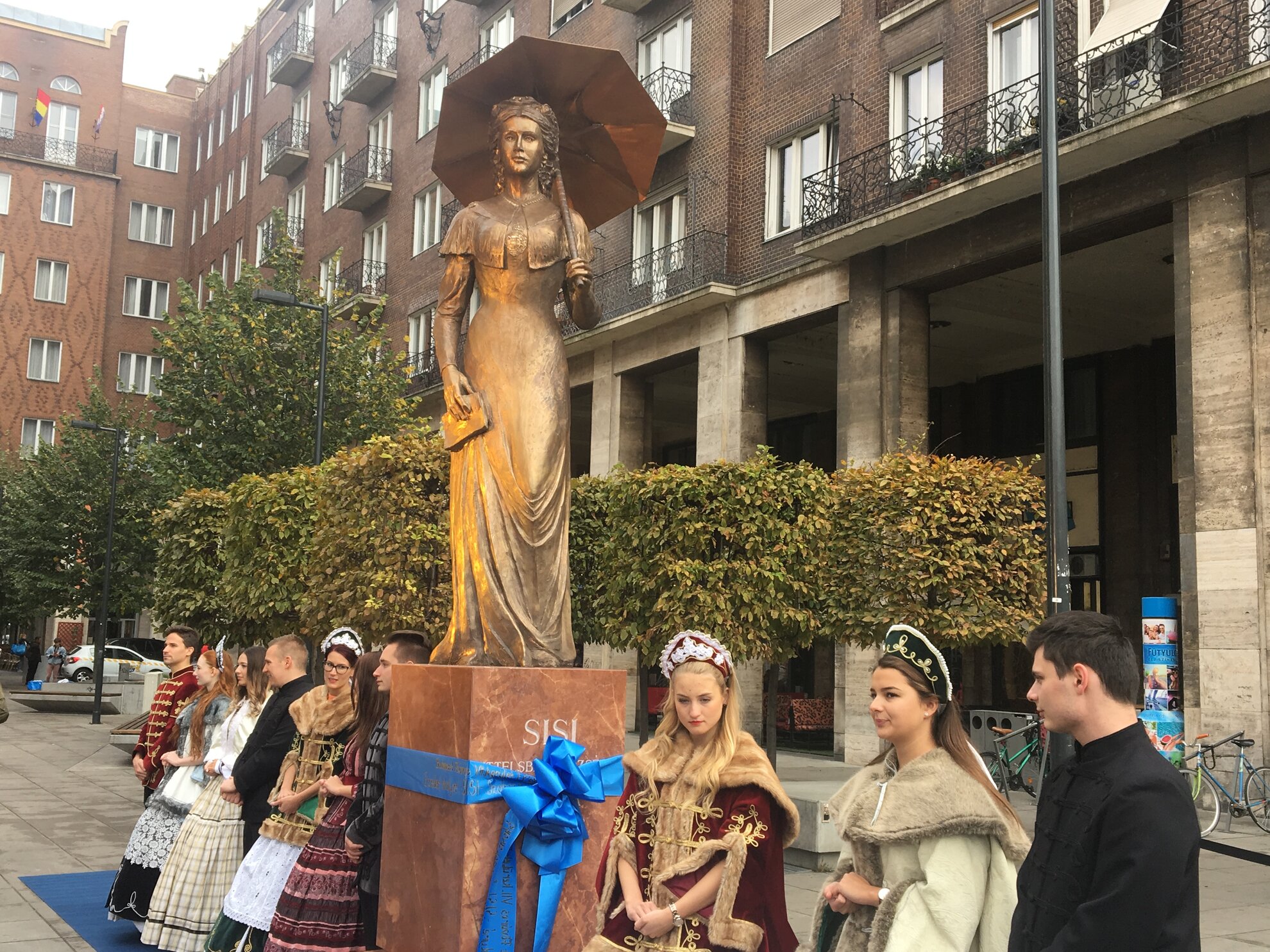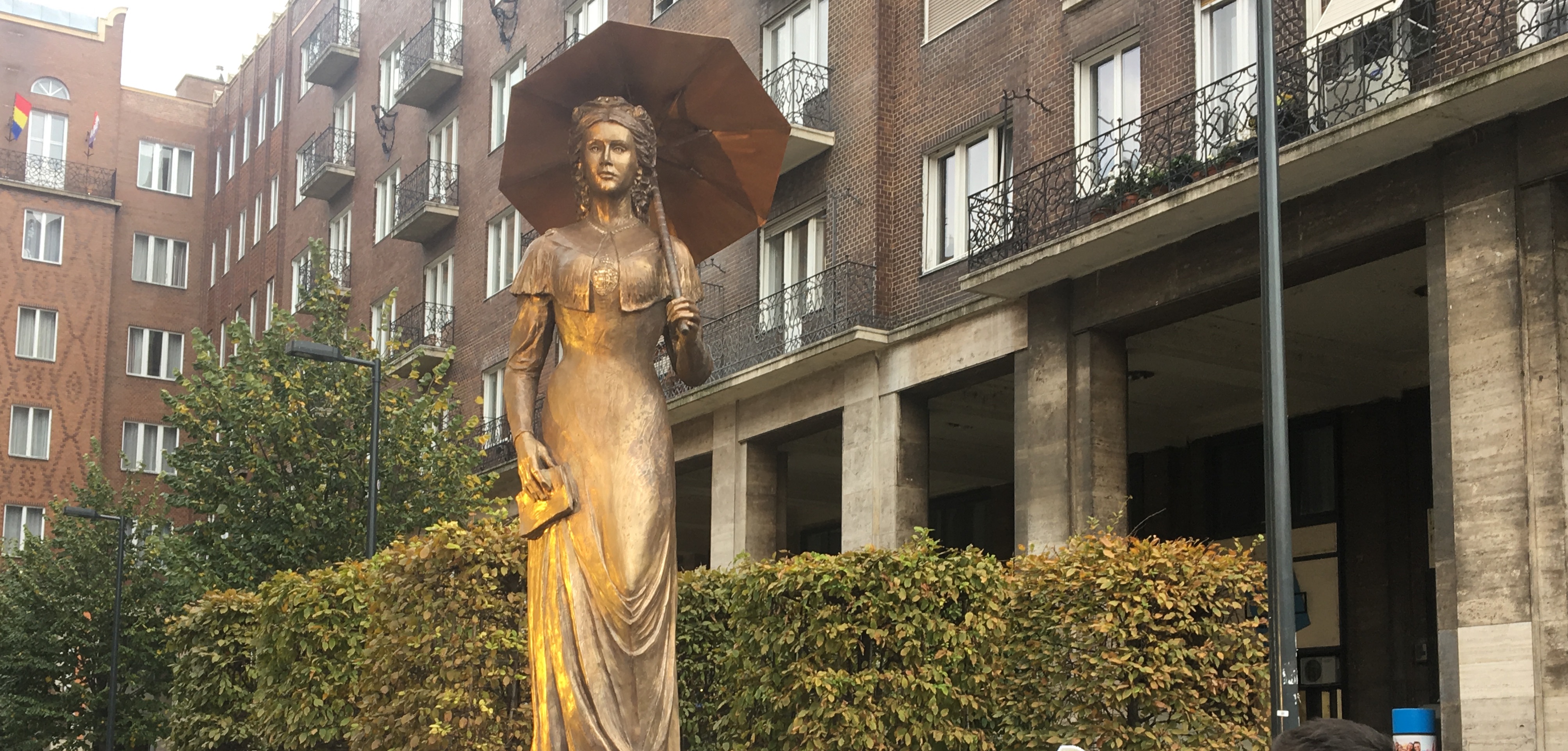A whole district, a bit of the Grand Boulevard, a major bridge, Budapest’s main square and now a new sculpture bear the name and honour the memory of a great monarch, Empress Elizabeth. After becoming the wife of Emperor Franz Josef, at the age of only 16, Elizabeth became a formal member of the Habsburg royal family and queen of Hungary.
Over time, Elizabeth developed a deep affection for this country and its culture, visiting frequently as she preferred its more relaxed atmosphere to Vienna’s. She even learned the language. In return, Hungarians lovingly nicknamed her Sisi. Her persona forever surrounded by myth and legend, her death in 1898 a violent assassination, Sisi is still greatly beloved by the country that continues to honour her memory.

The bronze sculpture – created by Hungarian sculptor Mária R. Törley – depicts Sisi in a more casual form, strolling in a light summer dress holding a parasol. Placed on focal Madách tér, Sisi stands by the symbolic gate of District VII.
She is shown holding a book by Hungarian poet and translator Dezső Mészöly, one that deals in detail with the Queen's poetry and refers to Sisi being a poeta natus, someone with great poetic abilities. Another interesting touch is the Hungarian Coat of Arms on her dress, proof of Sisi's love for this county and a reminder of her vital role in the seminal Austro-Hungarian Compromise of 1867.




